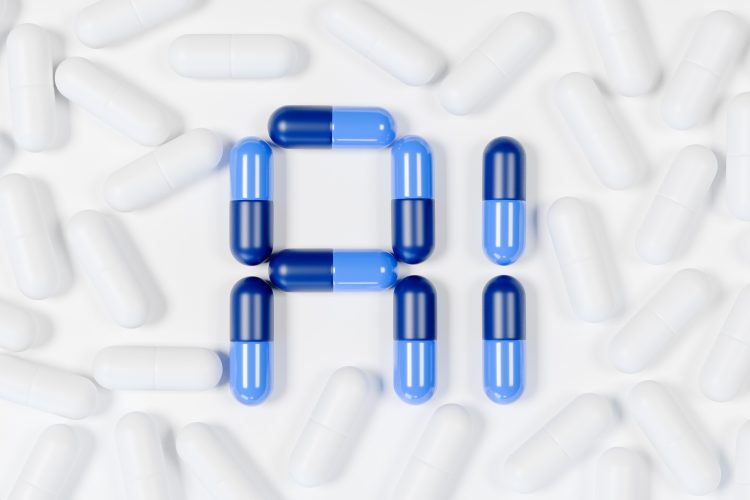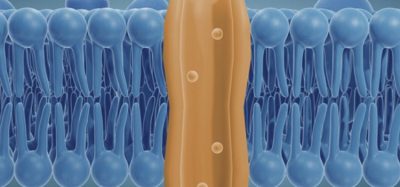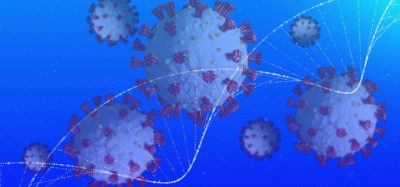Fixing drug discovery’s most persistent problem with AI
Posted: 10 July 2025 | Drug Target Review | No comments yet
AI will not replace drug discovery, but it might finally fix one of its most frustrating bottlenecks. Read how a targeted approach to ADMET is cutting through the noise.


Before a compound can become a viable therapy, it must pass a series of tests – not just for potency, but for how it behaves in the body. Absorption, distribution, metabolism, excretion and toxicity – collectively known as ADMET – are among the most critical and challenging hurdles in small molecule drug discovery. Medicinal chemists often describe ADMET optimisation as a frustrating ‘whack-a-mole’ problem: improve one property and another tends to deteriorate. It is an area where even experienced teams spend significant time and resources with uncertain outcomes.
Josh Haimson, Co-founder and Chief Executive of Inductive Bio considers this process ideally suited to AI application. Rather than attempting to automate the entire drug discovery process, he believes the key lies in addressing one of its most persistent bottlenecks with focused, specialised tools.
“We focus exclusively on ADMET optimisation,” he explains. That decision – to go deep rather than broad – has enabled Inductive Bio to develop tailored deep learning models that provide chemists with real-time, molecular-level insights before synthesis even begins.
Biomarkers are redefining how precision therapies are discovered, validated and delivered.
This exclusive expert-led report reveals how leading teams are using biomarker science to drive faster insights, cleaner data and more targeted treatments – from discovery to diagnostics.
Inside the report:
- How leading organisations are reshaping strategy with biomarker-led approaches
- Better tools for real-time decision-making – turning complex data into faster insights
- Global standardisation and assay sensitivity – what it takes to scale across networks
Discover how biomarker science is addressing the biggest hurdles in drug discovery, translational research and precision medicine – access your free copy today
The result: fewer failed compounds, faster iteration cycles and a more efficient path to candidate nomination.
Data sharing without compromise
Drug discovery has long been characterised by a strong culture of secrecy. With intellectual property forming the backbone of competitive advantage, companies are understandably cautious about sharing data – especially in preclinical stages. So how did Inductive Bio persuade leading pharma partners to contribute to a shared data consortium?
“You start by identifying truly pre-competitive areas,” Haimson explains.
As more partners joined, the models improved, which attracted more partners. It created a flywheel effect.
Inductive Bio’s approach hinges on drawing a clear line between commercially sensitive information and scientifically valuable data. Their models are not designed to extract proprietary targets or novel chemistry. Instead, they focus on shared challenges – such as how different molecular structures are absorbed, metabolised or solubilised. These core ADMET properties are fundamental to drug development across the industry, making them well-suited for pre-competitive collaboration.
To enable this kind of collaboration, Inductive built rigorous cybersecurity systems and clear legal frameworks, working hand-in-hand with both scientific and business teams. The result is a secure, give-to-get model that has grown into a data consortium with self-reinforcing momentum.
“As more partners joined, the models improved, which attracted more partners,” Haimson says. “It created a flywheel effect.”
Like the Protein Data Bank, which enabled breakthroughs by pooling structural data, Inductive Bio’s model shows how sharing foundational insights – without compromising intellectual property (IP) – can benefit the entire field.


ADMET refers to absorption, distribution, metabolism, excretion and toxicity. These are key factors in drug development, but predicting and optimising them remains a major challenge in drug discovery due to the complexity of human biology and variability in drug responses. Image credit: UGREEN 3S / Shutterstock.
From theory to tangible outcomes
This is not just a feel-good story about collaboration and potential. Inductive Bio’s approach is already delivering real results, with one standout example being a recent partnership with Nested Therapeutics.
In that project, Inductive’s ADMET models were integrated with Nested Therapeutics’ platform, which predicts how tightly compounds bind to cryptic protein pockets – a well-known challenge in drug design. Cryptic pockets are binding sites on proteins that are not visible in the static structure but can become exposed through conformational changes, making them difficult to detect yet valuable to target.
This allowed us to rapidly iterate and optimise lead compounds and address critical ADMET challenges.
“Integrating Inductive Bio’s ADMET models into Nested’s predictive platforms helped us to prioritise designs with optimal drug-like properties,” said Yongxin Han, EVP and Head of Drug Discovery at Nested. “This allowed us to rapidly iterate and optimise lead compounds and address critical ADMET challenges.”
According to Haimson, Inductive’s models played a key role in resolving issues around permeability and metabolic stability – both of which can significantly hinder a compound’s viability. With support from real-time predictions, the Nested team was able to accelerate lead optimisation and nominate a development candidate well ahead of typical timelines.
Not just another AI company
Plenty of startups are pitching AI solutions in drug discovery, but Haimson is confident that Inductive Bio is operating on a different wavelength.
For one, the team has chosen depth over breadth. While many competitors aim to address the entire pipeline, Inductive is laser-focused on ADMET, developing custom deep-learning architectures specifically tuned to predict complex assay outcomes. This narrow focus has already paid off: their Beacon-1 models ranked first among 39 competitors in the Polaris ADMET competition.
We are not a competitor. We are a technology partner.
Second, their Compass platform does not attempt to replace chemists – it assists them. In real time, Compass highlights which parts of a molecule might cause issues and offers guidance on how to improve those features. It is intuitive, responsive and requires no background in machine learning – making it a genuine copilot in the lab.
Third, Inductive is not building its own drug pipeline. “We are not a competitor,” Haimson says. “We are a technology partner.” It allows them to work across dozens of active drug programmes, spanning everything from neuroscience to oncology, inflammation to immunology.
Inductive’s platform has already evaluated over a million molecule designs, providing chemists with rapid predictions of ADMET-related liabilities during the design phase.
Fewer failed molecules, faster therapies
With economic pressures squeezing the sector and global competition intensifying, biotech firms are under more scrutiny than ever. Investors want results, fast. That is where Inductive’s value proposition becomes hard to ignore.
“To stay alive and competitive, biotech companies are forced to develop drugs with fewer resources and reach critical fundraising milestones sooner,” reflects Haimson.
By giving chemists a clearer view into how their designs will behave, Inductive’s platform helps reduce costly guesswork. Predictions come with probability estimates – not just binary yes/no judgements – so teams can assess risk and prioritise effectively. For example, the platform may predict a 75 percent likelihood that a molecule will face metabolic stability issues. This allows chemists to test hypotheses and adjust designs in real time, making more informed decisions before committing to synthesis.
To stay alive and competitive, biotech companies are forced to develop drugs with fewer resources and reach critical fundraising milestones sooner.
And while today’s focus is ADMET, Josh highlighted that their platform is built for flexibility. As their data consortium grows, the models are continuously refined across chemical and therapeutic contexts. Weekly experimental feedback from partners feeds into the system, driving ongoing improvements.
“Every week, our partners are making molecules and running experiments,” Haimson explains. That loop – design, predict, test, learn – is what makes their models increasingly powerful.
In five years, he predicts that AI-guided design will not just be a niche tool – it will be the industry standard. The days of synthesising thousands of compounds in the hope that one might work are numbered.
A fundamental shift in early-stage research
With tightened funding and rising global competition, Haimson notes that demand for Inductive Bio’s platform is only growing. “The pharmaceutical industry is facing pressure on multiple fronts: increasingly scarce early-stage funding, growing competition from Chinese biotech companies, and a traditional drug discovery process that remains inefficient and expensive.” In response, companies are turning to tools that can reduce risk, speed up decision-making and conserve resources.
In a field where timelines are long and uncertainty is the norm, Inductive Bio’s work is a reminder that progress does not always come from sweeping reinvention. Sometimes, it comes from solving the hardest, most overlooked problems – one molecule at a time.


Josh has spent his career focused on the intersection of machine learning, product, and life sciences/healthcare.Prior to Inductive, Josh was the Director of Product for the ML and data curation organisations at Flatiron Health, where his teams worked to generate real-world evidence (RWE) at scale across Flatiron’s network of over 2 million active cancer patients for use by researchers in pharma, academia, and government.
Prior to Flatiron, Josh was at MIT studying computer science and working with researchers at Massachusetts General Hospital to use ML and NLP to predict patient response to cardiac resynchronisation therapy.
Related topics
Analysis, Artificial Intelligence, Assays, Drug Discovery, Drug Discovery Processes, Machine learning, Medicinal Chemistry, Small molecule, Toxicology, Translational Science
Related organisations
Inductive Bio








